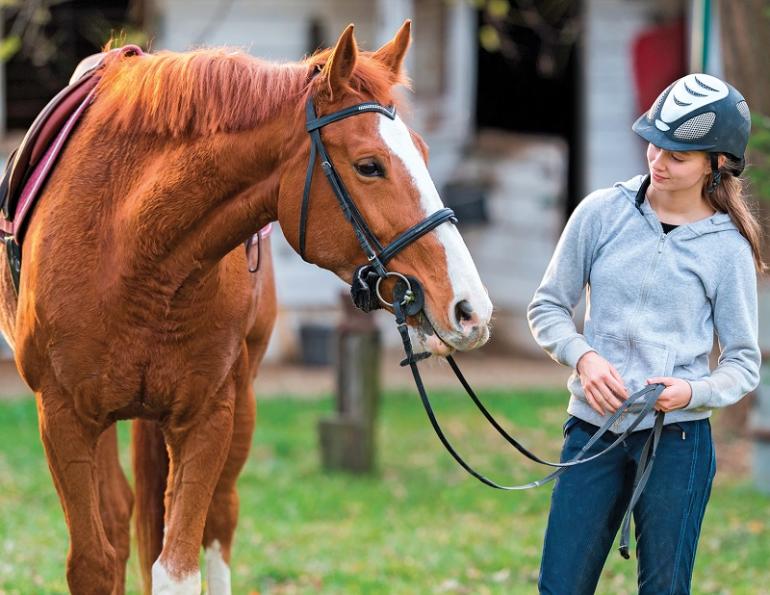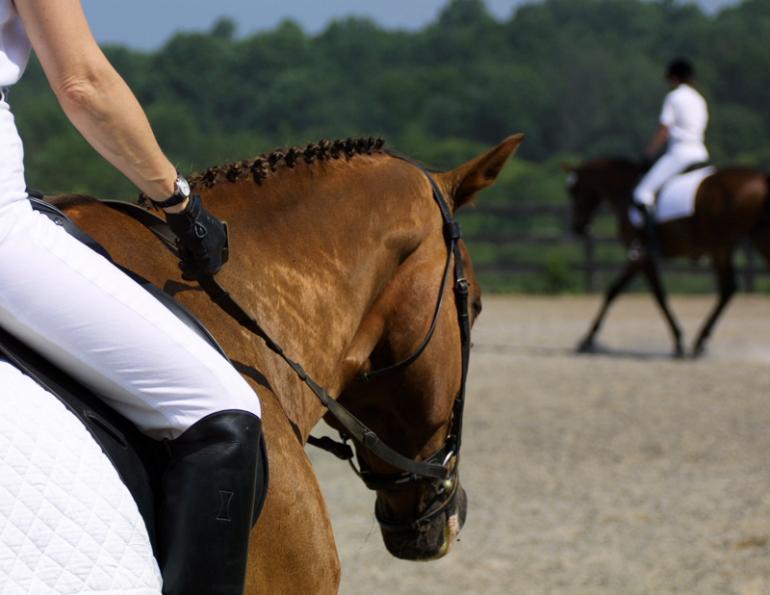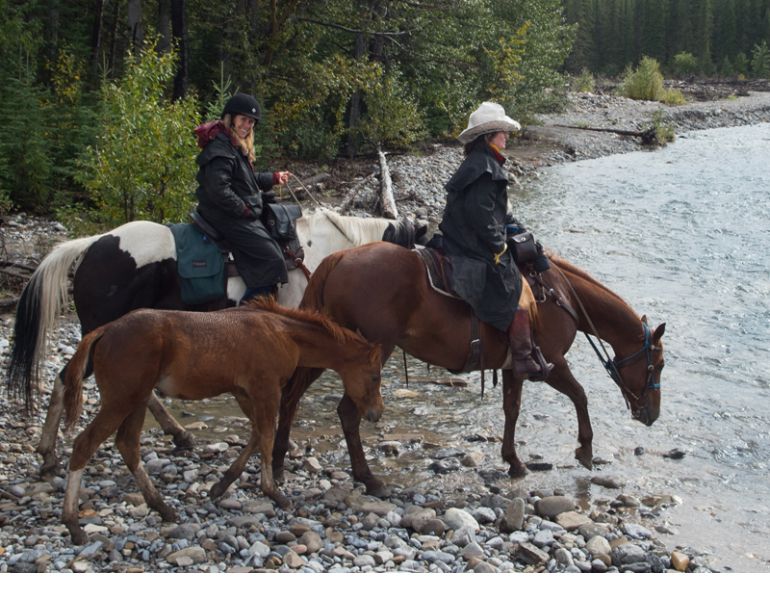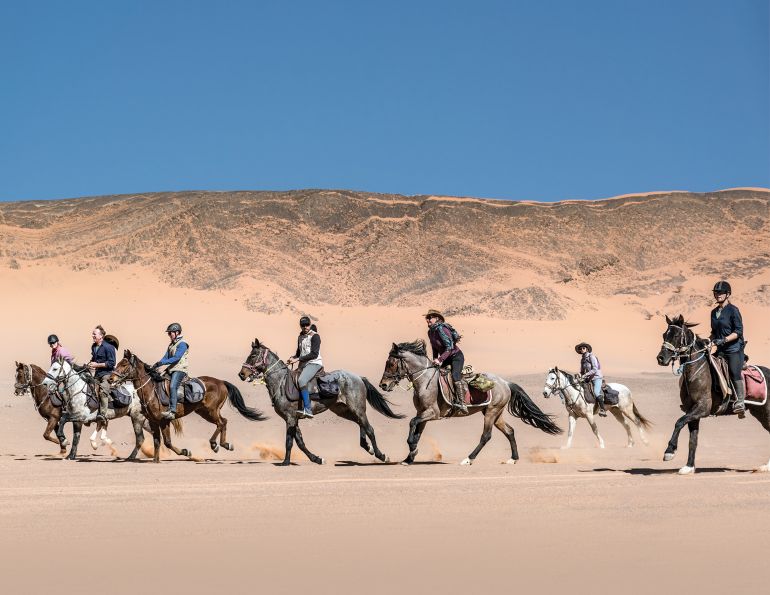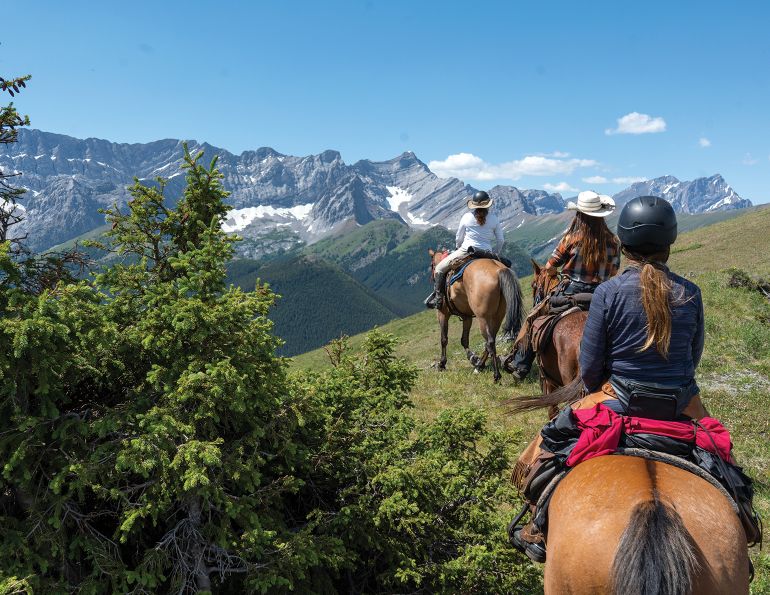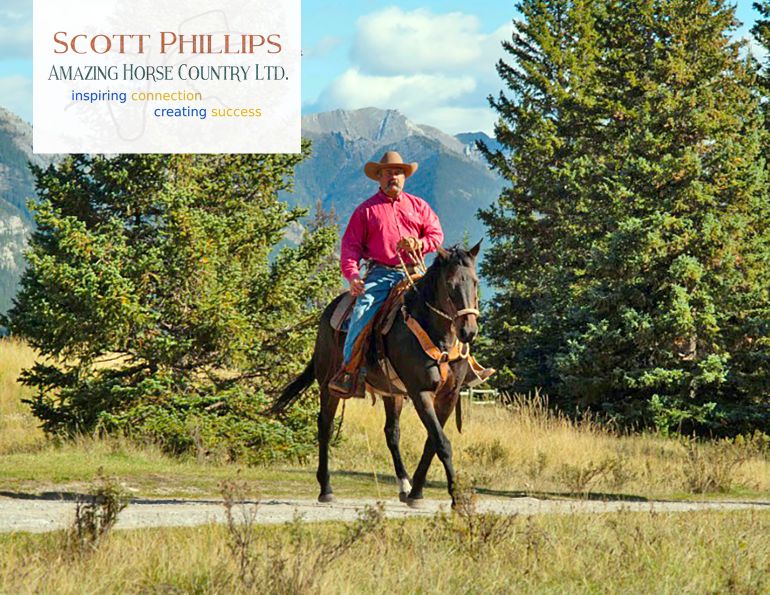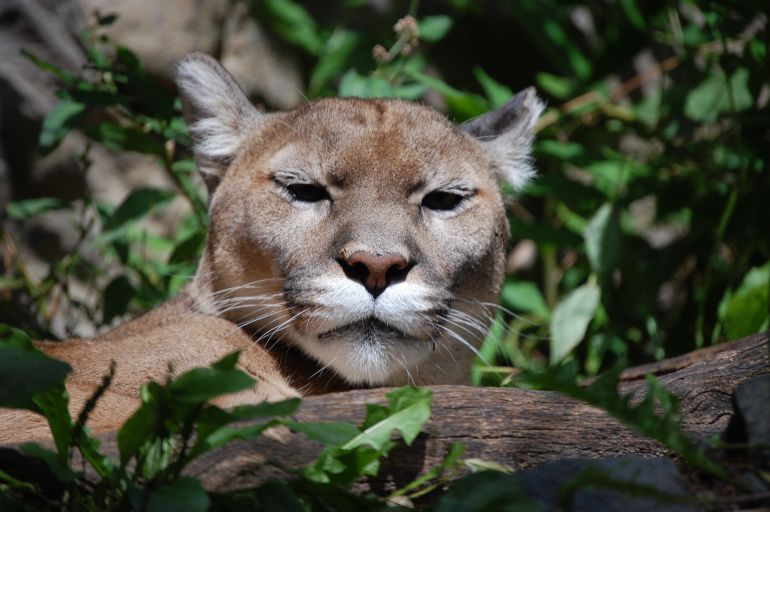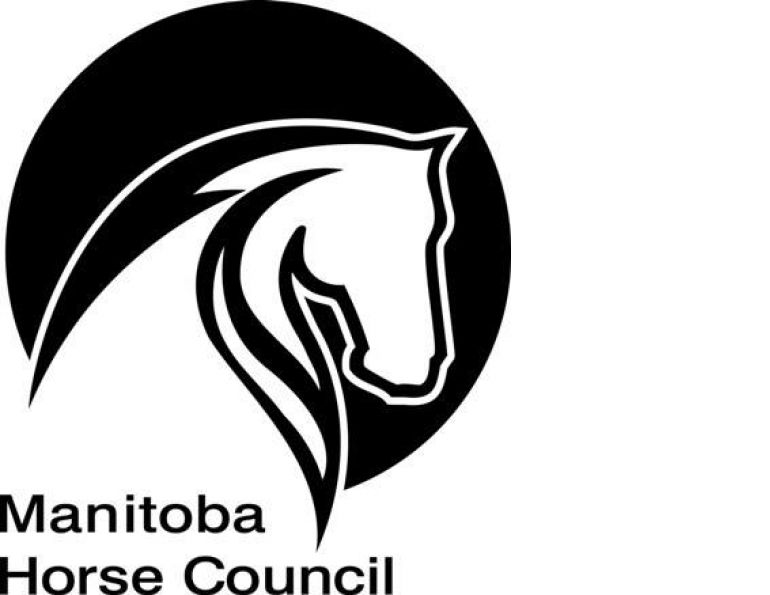By Cassidy Nunn
Despite an infected foot and a tightening budget, I wasn’t going to let anything stand in the way of this dream adventure. Horse trekking across the vast Rajasthani desert and hills on majestic Marwari horses had been a lifelong aspiration, and nothing would stop me from making it a reality. I took another dose of antibiotics, wrapped my foot, and set off with excitement for three unforgettable days of riding in India.
My cousin, Brianna Sloan, and I had been traveling across Southeast Asia for over four months, and we were both eager to finally get back in the saddle. While camel treks are a popular and more affordable way to explore Rajasthan, we were determined to experience the region on horseback, our preferred mode of transport. For true horse lovers, there is no better way to discover India’s beauty than by riding its landscapes.
We booked our trek through the Khumba Palace Guest House, which came highly recommended for horse trekking experiences. The guest house owners, Dinesh Jain and his Dutch wife, Francine Jain-Rothius, also run the Krishna Ranch, located just seven kilometers from the picturesque city of Udaipur. Dinesh, a passionate horseman, has been organizing desert treks for over a decade, offering everything from day trips to month-long rides. He’s ridden all over Rajasthan, but his favorite journey is the annual trek from Udaipur to the famous Pushkar Camel Fair each November. This legendary fair attracts up to 15,000 horses and 25,000 camels, making it a must-see event, according to Dinesh. "I always tell myself I won't buy a horse, but sometimes that changes," he admitted with a sheepish grin.
While on a trip through Southeast Asia, cousins Cassidy Nunn and Brianna Sloan embarked on a horse trek through the desert of Rajasthan, in India. Cassidy poses with her Marwari partner, Chandra. Photo: Brianna Sloan
My cousin, Brianna Sloan, and I had been traveling for over four months throughout Southeast Asia and we were desperate to ride. While camel treks are the more popular and cheaper option for exploring Rajasthan, we far preferred to be back on our favourite animals. For horse enthusiasts, there is no better way to see this country than by horseback.
We arranged our trek through the Khumba Palace Guest House, which came highly recommended in our guide book for horse trekking. The guest house owners, Dinesh Jain and his Dutch wife, Francine Jain-Rothius, also run the Krishna Ranch, which is located seven kilometers outside of the romantic city of Udaipur. Dinesh, the horse enthusiast in the relationship, has been organizing rides and treks in the desert for the past 12 years, from day rides to month long excursions. He has ridden all over Rajasthan, but his favourite trek is the yearly November ride from Udaipur to the world famous Camel Fair in Pushkar. The fair boasts up to 15,000 horses and 25,000 camels and is an event not to be missed, according to Dinesh. “I always go and say ‘no, I won’t buy a horse,’ but that sometimes changes,” he confessed with a guilty grin.
Photo: Cassidy Nunn
Alas, horses are expensive no matter where you find yourself in the world, and compared to camel trekking in Rajasthan, the ride seemed on the pricey side, especially for two students on an seven-month trip. In the end, with the number of people accompanying us, the amazing food and the supreme condition the horses were in, I was surprised it hadn’t cost more. But this is India, after all, and the price of most things, by western standards, is minimal and very affordable.
On the first morning of our trek, Dinesh arranged a rickshaw to drop us off at the ranch where we met our fellow trekkers, Sonya and Stephan Schmid, a brother and sister duo from Switzerland. Both had never ridden before, but were eager to give it a try. “I wanted to be out in nature to see the countryside and the horse was a good way to do it,” said Sonya, when asked what had inspired a non-rider to tackle three days of difficult riding. “The horses belong to this region, so it was fitting.”
Taking a step back in time, a team of oxen bring water from the well to irrigate nearby farm fields. Photo: Cassidy Nunn
Dinesh was concerned about my injured foot, the result of a camel-ride rub which had become infected, but seemed satisfied when I added my trusty first aid kit to my saddle bags. After donning helmets and half-chaps, we finally set off! Our party consisted of: six Marwari horses (four mares, one gelding, and my mount, the three-and-a-half year-old stallion, Chandra), our two guides (Dinesh and his right-hand man, Toli Ram), and a support crew of six others, who drove ahead in a truck loaded with necessities to keep our group well fed and warm each night. Although the desert air was intensely hot during the day, February is still a cold month for Rajasthan and the nights consistently dipped below zero degrees celsius. Dinesh was prepared, of course, and we camped in style with huge tents, beds, mattresses, and many warm blankets.
Each day we rode for between five and six hours and covered approximately 30 kms of varied terrain, close to 100 kms in total. The Marwari horse is the ultimate speed-walker; according to Dinesh they can cover seven kms per hour with their brisk strides, whereas other breeds generally average around five kms. The horses were energetic and spirited, but very rideable, even for the two beginners. Dinesh buys his horses young; he prefers to raise and train them under his skilled hands and his knowledge and experience showed in the impeccable behaviour of the horses. They were true Indians. Nothing fazed them, even when massive trucks blared their horns and roared past us with inches to spare. I was especially impressed with my mount. I expected the young stallion to be a bit of a handful, and although he had a few moments of excitement when we passed a camel or some other intriguing animal, he listened to my directions and followed them willingly. With his quiet demeanor and friendly personality, Chandra will certainly sire some fabulous Marwari foals.
The only bit of colour for miles around is a local woman doing laundry in the river. Photo: Cassidy Nunn
The horses were like mountain goats, and with their light, sure steps, they picked their way over all sorts of terrain, much of it uneven or crumbling. We rode on roads paved and unpaved, through fields, heavy desert sand, dry riverbeds, rocky cliff-sides, steep mountain slopes, crumbly shale paths, deep river crossings, and many a poor farming village. The scenery was spectacular. Sometimes, with only the barren, colourless desert surrounding us, it felt as though we were in the middle of nowhere, an odd feeling to experience in a country of 1.3 billion people. But then we’d ride over a mountain and on the other side a shimmering blue lake or a colourful patchwork quilt of crops and a small town would greet us: a little pocket of life in a seemingly dead land.
Curious local boys came by to say “namaste!” Photo: Cassidy Nunn
Riding through the villages was like going through a time warp. We passed teams of oxen as they circled endlessy, drawing water from old stone wells to irrigate the fields; villagers walked by us with jugs of water precariously balanced on their heads and women herded goats and skinny cattle through the narrow streets. This was a whole new level of poverty compared to what we’d seen in the big, overpopulated cities of India. In these rural towns, the villagers’ whole lives revolve around their crops, and one bad year leaves them with nothing. Still, the people smiled broadly at us when we passed through; our arrival was always a celebrated event. The children were often let out of school (if the town had one), and they’d wave at us and shout “namaste!” (a common greeting), or test their English with a jubilant “hello!” The horses always picked up on the villagers’ enthusiasm and they danced through the narrow streets, usually artfully dodging a cow or stray goat. We frequently encountered herds of water buffalo. Their thick, creamy milk is an essential ingredient used in the cooking, and they can be found all over India. Most of the horned beasts looked terrified of our horses when we passed, despite their larger size.
They’d leap away in a display of apparent terror, then quickly turn their broad noses up in the air and gaze with a curious hostility as we continued on.
Canvas tents set up in a dry lake bed. When the summer monsoons arrive, the lake will be full once again. Photo: Cassidy Nunn
Each night we camped close to a village and a water source such as a lake. In the late afternoon we’d ride up, and almost as soon as we had dismounted a steaming glass of rich, spiced chai tea was placed into our dusty hands. Dinesh and his team would then hobble the horses and pitch our fancy canvas tents. The horses were hobbled by one back leg and by their halters to ensure they couldn’t become tangled or wander too far. They were groomed until their coats gleamed, and then bundled up in blankets made from old feed bags sewn together: they lacked class, but did the trick. Then, as a reward for their hard day’s work, each horse was served a mound of hay topped with a sprinkling of lush green grass, followed by pails of refreshing water and bright yellow feed bags full of a fresh bran mash. Before bed, Dinesh lovingly doled out a chunk of hard brown sugar for dessert, with a pat “goodnight.”
Bhanwar Gameti prepared delightful Indian meals, such as warm chapattis, spicy dahls, and aloo, over a small kerosene stove. Photo: Cassidy Nunn
We too were spoiled when it came to the food. We had Bhanwar Gameti along as our cook and he is, in our opinion, Rajasthan’s best chef! The slim 25-year-old barely looks old enough to be working, let alone to be a father, but the friendly talented young man has been married for seven years and has a 14-month-old daughter. People grow up fast in India. To our astonishment, Bhanwar doesn’t cook for a living, (“Not enough money in it,” he said, sadly), but he is always up for a trek and a chance to get away from the bustling city life. He prepared the most delicious Indian meals for us over a small kerosene stove. Every night we’d devour warm chapattis (flat, Indian bread), thick, spicy dahls (a lentil curry) and exceptional aloo (potato) dishes that had our tongues dancing. “It was the best Indian food I’ve had in India!” said Brianna enthusiastically, “...and watching the cook make the food was really neat...you don’t get to see that when you go to a restaurant.” Thankfully, there was always enough for seconds, or thirds!
On our final day, after polishing off our afternoon chai, Dinesh came running up to us, eyes sparkling, and said he had a surprise: he’d arranged for a driver to take us to visit an ancient Hindu temple up in the mountains. After a rough drive up roads I never would have thought a car could navigate, let alone the jalopy in which we were bouncing along, we stopped in a quiet grove of Banyon trees and climbed the steep stairway to the temple. Inside, we drank tea prepared for us over an eternally-burning fire by one resident sadhu (meaning spiritual, holy man) and rang bells with a second sadhu, while he performed his daily prayer rituals called Puja. It was a special, spiritual experience unlike any I’d had in India so far, largely because there were no other tourists at this temple!
A lunch and rest break by the river. Photo: Cassidy Nunn
Our last morning was one of the most difficult parts of the trek. We woke to a group of about 12 mangy children with legs like twigs, wrapped in tattered scarves, huddled around the dying embers of our campfire. Bhanwar had prepared a feast for breakfast of hot, milky porridge, a platter of fresh fruits, toast with jam, and mugs of sweet chai. Dozens of eyes stared hungrily at our smorgasbord. None of us could bear to eat in front of the children; they had very likely never seen so much food on offer at one time, let alone delicacies such as an apple. We westerners split off to wander aimlessly around the camp with our bowls of steaming porridge, searching for a sheltered place to eat. But it’s the desert, and with nowhere to hide, I nestled into Chandra’s side to wolf down guilty spoonfuls of the warm mash while he munched on his breakfast.
Dinesh had sent three mares back to the ranch the previous night in the back of the truck. Horse trailers, apparently, don’t exist in India. The next morning, with the truck returned, we loaded the three remaining horses. The men backed the truck up to an embankment, dropped the half door, and one by one each horse was led into the back. The horses all loaded without fuss and stood quietly snuggled together, occasionally poking their noses over the side to see what was going on. To my delight, Dinesh asked if Brianna and I would like to sit on top of the truck with Toli to hold the horses’ heads for the two hour drive back to Udaipur. Of course we both gleefully accepted and scrambled up the side of the truck to perch on the roof of the cab. With the cool wind toussling my hair, and the horses snuffling my dangling bare feet, I couldn’t help but think how incredibly illegal this would be in Canada! As Brianna and I serenaded the horses and Toli with western songs, I was already planning my return to India and my next desert trek!
For more information on horse trekking in India, here are a few links:
www.royalridingholidays.com
www.princesstrails.com
Marwari Horse Facts
History
- The Marwari horse is an ancient Indian breed native to the desert province of Rajasthan, India. The breed dates back to the 12th century, when rulers of the Marwar region began to selectively breed the horse as a warrior’s mount.
- Marwari means “from the land of death” which is a fitting name for these horses from the barren desert.
- The Marwari is known for its supreme speed, stamina and endurance, all of which are necessary traits to survive in extreme desert conditions. They are considered to be hardy, loyal, and tireless mounts.
- During the British Raj in India between 1858 and 1947, and continuing after India gained its independence, the Marwari horses were neglected and the numbers of purebreds dwindled.
- Restoration efforts began in the early 1990s when the Marwari breed was nearing endangerment, with the population hovering between 500 and 600.
Physical Characteristics
- The main unique, distinguishing, characteristic of the Marwari horses is their lyre-shaped ears that curve inwards and often look as though they touch in the middle.
- Marwari’s tend to have very refined, sculpted heads, similar to that of their desert cousins, Arabians.
- The average height of a Marwari is between 14.2 and 16 hands, although occasionally a few reach 17 hands.
- The breed comes in a variety of colours, from solid colours to skewbalds and piebalds.
- The Marwari is a “gaited” horse. They are born with a revaal gait: a quick, four-beat lateral gait that is smoother than a trot, and perfect for long days of riding across the desert.
- Hard hooves enable the Marwari to ride over all sorts of terrain with few foot problems. Most are shod, however, for long treks.
Use
- In India, the Marwari horse is often used for wedding ceremonies; traditionally, the groom arrives at the ceremony astride an ornately decorated horse. Some are trained to “dance” in an Indian form of haute ecole at such events. Marwaris also regularly appear on the big screen, in Bollywood films.
- Marwari horses are commonly used for pulling carts, racing, polo, pleasure riding, as a police or army mount, and for trekking.
Future
- Today, the Marwari horse has survived the threat of extinction and numbers are on the rise. The breed is once again achieving popularity both in India and abroad.
- A small number of Marwari breeders can now be found in Europe and the United States. As the breed continues to gain awareness, the number of foreign breeders is on the rise.
Main photo: Cassidy Nunn - After a hard day’s work, each horse enjoyed a mound of hay topped with lush green grass, pails of refreshing water, bright yellow feed bags full of bran mash, and a chunk of brown sugar for dessert. Their blankets are old feed bags sewn together.



